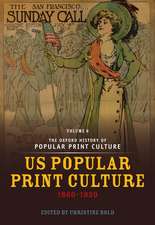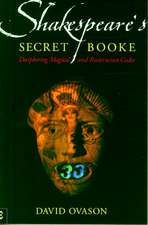The Vulgarization of Art: The Victorians and Aesthetic Democracy: Victorian Literature and Culture Series Victorian Literature
Autor Linda Dowlingen Limba Engleză Paperback – 31 dec 2014 – vârsta de la 22 ani
In this major reinterpretation of the Victorian Aesthetic Movement, Linda Dowling argues that such classic works of Victorian art writing such as Ruskin's Stones of Venice of Morris's Lectures on Art or Wilde's Critic as Artist become wholly intelligible only within the larger ideological context of the Whig aesthetic tradition.
The Vulgarization of Art explores the tragic consequences for the Aesthetic Movement when a repressed and irresolvable conflict between Shaftesbury's assumption of "aristocratic soul" and the Victorian ideal of "aesthetic democracy" repeatedly shatters the hopes of such writers as Ruskin, Morris, Pater, and Wilde for social transformation through the aesthetic sense.
| Toate formatele și edițiile | Preț | Express |
|---|---|---|
| Paperback (1) | 312.36 lei 43-57 zile | |
| University of Virginia Press – 31 dec 2014 | 312.36 lei 43-57 zile | |
| Hardback (1) | 530.33 lei 43-57 zile | |
| University of Virginia Press – 31 dec 2014 | 530.33 lei 43-57 zile |
Preț: 312.36 lei
Nou
Puncte Express: 469
Preț estimativ în valută:
59.77€ • 62.57$ • 49.46£
59.77€ • 62.57$ • 49.46£
Carte tipărită la comandă
Livrare economică 07-21 aprilie
Preluare comenzi: 021 569.72.76
Specificații
ISBN-13: 9780813929323
ISBN-10: 0813929326
Pagini: 164
Dimensiuni: 152 x 229 x 9 mm
Greutate: 0.2 kg
Editura: University of Virginia Press
Seria Victorian Literature and Culture Series Victorian Literature
ISBN-10: 0813929326
Pagini: 164
Dimensiuni: 152 x 229 x 9 mm
Greutate: 0.2 kg
Editura: University of Virginia Press
Seria Victorian Literature and Culture Series Victorian Literature
Textul de pe ultima copertă
In this major reinterpretation of the Victorian Aesthetic Movement, Linda Dowling argues that such classic works of Victorian art writing as Ruskin's Stones of Venice or Morris's Lectures on Art or Wilde's Critic as Artist become wholly intelligible only within the larger ideological context of the Whig aesthetic tradition. Tracing the genealogy of Victorian Aestheticism back to the first great crisis of the Whig polity in the earlier eighteenth century, Dowling locates the source of the Victorians' utopian hopes for art in the "moral sense" theory of Anthony Ashley Cooper, third earl of Shaftesbury. Shaftesbury's theory of a universal moral sense, argues The Vulgarization of Art, became the transcendental basis for the new Whig polity that proposed itself as an alternative to older theories of natural law and divine right. It would then sustain the Victorians' hope that their own nightmare landscape of commercial modernity and mass taste might be transformed by a universal pleasure in art and beauty. The Vulgarization of Art goes on to explore the tragic consequences for the Aesthetic Movement when a repressed and irresolvable conflict between Shaftesbury's assumption of "aristocratic soul" and the Victorian ideal of "aesthetic democracy" repeatedly shatters the hopes of such writers as Ruskin, Morris, Pater, and Wilde for social transformation through the aesthetic sense.


















